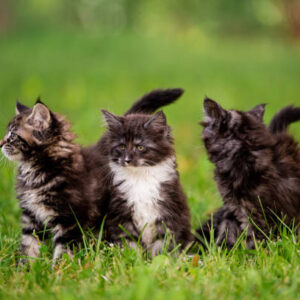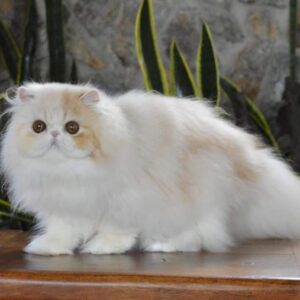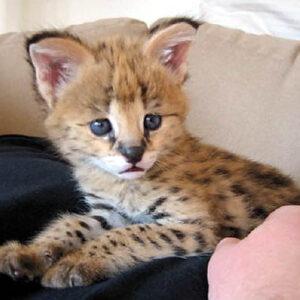Shop
Burmese Cats And Kittens For Sale
$1,200.00
Burmese Cats And Kittens For Sale
Burmese Cats And Kittens For Sale. The Burmese cat (Burmese: ဗမာကြောင်, Băma kyaung, Thai: ทองแดง or ศุภลักษณ์, RTGS: Thongdaeng or Supphalak, meaning copper colour) is a breed of domestic cat, originating in Burma, believed to have its roots near the Thai-Burma border and developed in the United States and Britain.
Burmese Cats And Kittens For Sale
Burmese Cats And Kittens For Sale. The Burmese cat (Burmese: ဗမာကြောင်, Băma kyaung, Thai: ทองแดง or ศุภลักษณ์, RTGS: Thongdaeng or Supphalak, meaning copper colour) is a breed of domestic cat, originating in Burma, believed to have its roots near the Thai-Burma border and developed in the United States and Britain.
Most modern Burmese are descendants of one female cat called Wong Mau, which was brought from Burma to the United States in 1930 and bred with American Siamese. From there, American and British breeders developed distinctly different Burmese breed standards, which is unusual among pedigreed domestic cats. Most modern cat registries do not formally recognise the two as separate breeds, but those that do refer to the British type as the European Burmese.
Originally, all Burmese cats were dark brown (genetically black), but are now available in a wide variety of colours; formal recognition of these also varies by standard. Both versions of the breed are known for their uniquely social and playful temperament and persistent vocalisation.
Burmese Cats And Kittens For Sale
History
In 1871, Harrison Weir organised a cat show at the Crystal Palace, London. A pair of Siamese cats were on display that closely resembled modern American Burmese cats in build, thus probably similar to the modern Tonkinese breed. The first attempt to deliberately develop the Burmese in the late 19th century in Britain resulted in what were known as Chocolate Siamese rather than a breed in their own right; this view persisted for many years, encouraging crossbreeding between Burmese and Siamese in an attempt to more closely conform to the Siamese build. The breed thus slowly died out in Britain.
Joseph Cheesman Thompson imported Wong Mau, a black female cat, into San Francisco in 1930. Thompson considered the cat’s build to be sufficiently different from the Siamese to still have potential as a fully separate breed. Wong Mau was bred with Tai Mau, a seal point Siamese, and then bred with her son to produce dark brown kittens that became the foundation of a new, distinctive strain of Burmese. In 1936, the Cat Fanciers’ Association (CFA) granted the breed formal recognition. However, due to continued extensive outcrossing with Siamese cats to increase the population, the original type was overwhelmed, and the CFA suspended breed recognition a decade later. Attempts by various American breeders to refine the unique Burmese standard persisted, however, and in 1954, the CFA lifted the suspension permanently. In 1958, the United Burmese Cat Fanciers (UBCF) compiled an American judging standard that has remained essentially unchanged since its adoption.
Adopt Burmese Cats And Kittens For Sale
Meanwhile, in the UK, interest in the breed was reviving. The cats that composed the new British breeding program were of a variety of builds, including some imported from the United States. By 1952, three true generations had been produced in Britain and the breed was recognised by the United Kingdom’s Governing Council of the Cat Fancy (GCCF). Since the 1950s, countries in the Commonwealth and Europe started importing British Burmese; as a result, most countries have based their standard on the British model.
Historically, the two versions of the breed were kept strictly distinct genetically. European Burmese (also known as “traditional”) were declassed as a breed by the CFA in the 1980s. The GCCF banned the registration of all Burmese imported from the United States in order to preserve the “traditional” bloodlines. Most modern cat registries do not formally recognise these dual standards as representing separate breeds, but those that do refer to the British type as the European Burmese. Recently, The International Cat Association (TICA) and CFA clubs have started using the American breed standard at select shows in Europe.
During the early period of breed development, it became clear that Wong Mau herself was genetically a crossbreed between a Siamese and Burmese type. This early crossbreed type was later developed as a separate breed, known today as the Tonkinese. Burmese cats have also been instrumental in the development of the Bombay and the Burmilla, among others.

mother cat kisses, washes, licks her baby kittens. Wicker basket, white wooden background
Description
Appearance
Side facial profile comparison
lilac tortoiseshell American adult
chocolate European adult
Body shape comparison
chocolate American adult
chocolate European adult
The two standards differ mainly in head and body shape. The British or traditional ideal tends toward a more slender, long-bodied cat with a wedge-shaped head, large pointed ears, long tapering muzzle and moderately almond-shaped eyes. The legs should likewise be long, with neat oval paws. The tail tapers to medium length. The American (also called “contemporary”) Burmese is a noticeably stockier cat, with a much broader head, round eyes and distinctively shorter, flattened muzzle; the ears are wider at the base. Legs and tail should be proportionate to the body, medium-length, and the paws also rounded.
In either case, Burmese are a small to medium size breed, tending to be about 4–6 kg (9–13 lb), but are nevertheless substantially-built, muscular cats and should feel heavy for their size when held – “a brick wrapped in silk”.
Coat and colour
Chocolate tortoiseshell American adult
Black European kitten. The temperature sensitive colourpoint restriction gene causes black sepia kittens to be born with light coats.
In either standard, the coat should be very short, fine and glossy, with a satin-like finish. Colour is solid and must be uniform over the body, only gradually shading to lighter underparts. Faint colourpoint markings may be visible, but any barring or spotting is considered a serious fault. The eyes are green or gold depending on coat colour.
The breed’s original standard colour is a distinctively rich dark brown (genetically black), variously known as sable (USA), brown (UK, Australia) or seal (New Zealand). It is the result of the Burmese gene (cb), part of the albino series. This gene causes a reduction in the amount of pigment produced, converting black into brown and rendering all other colours likewise paler than their usual expression. The action of the gene also produces the modified colourpoint effect, which is more noticeable in young kittens.
Lilac European adult
The first blue Burmese was born in 1955 in Britain, followed by red, cream, and tortoiseshell over the next decades. Chocolate (“champagne” in the USA) first appeared in the United States. Lilac (“platinum” in the USA), the last major variant to appear, was likewise developed in the USA beginning in 1971. Currently, the British GCCF standard recognises solid black (“brown” in the UK), chocolate, blue, lilac, red and cream, as well as the tortoiseshell pattern on a base of black, chocolate, blue or lilac. Burmese Cats And Kittens For Sale











Reviews
There are no reviews yet.